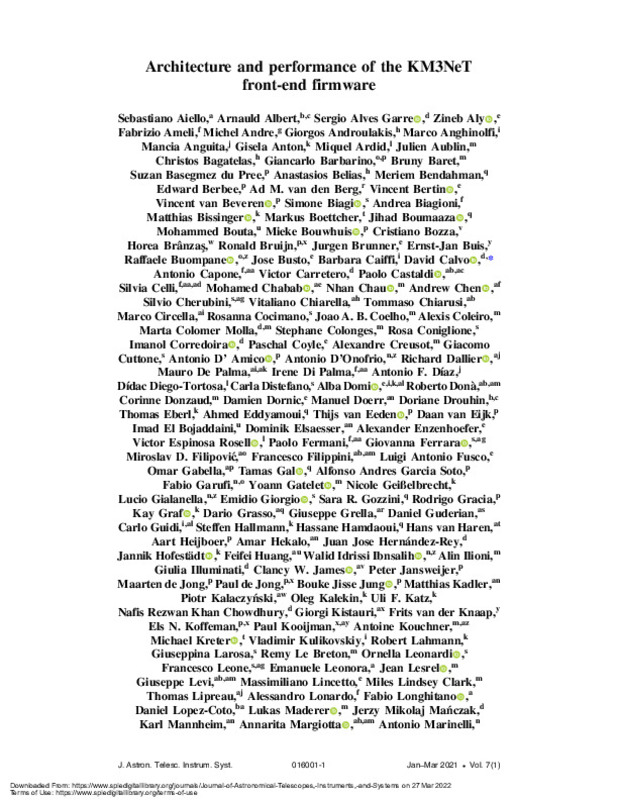JavaScript is disabled for your browser. Some features of this site may not work without it.
Buscar en RiuNet
Listar
Mi cuenta
Estadísticas
Ayuda RiuNet
Admin. UPV
Architecture and performance of the KM3NeT front-end firmware
Mostrar el registro completo del ítem
Aiello, S.; Albert, A.; Alves Garre, S.; Aly, Z.; Ameli, F.; Andre, M.; Androulakis, G.... (2021). Architecture and performance of the KM3NeT front-end firmware. Journal of Astronomical Telescopes, Instruments, and Systems. 7(1):1-24. https://doi.org/10.1117/1.JATIS.7.1.016001
Por favor, use este identificador para citar o enlazar este ítem: http://hdl.handle.net/10251/187688
Ficheros en el ítem
Metadatos del ítem
| Título: | Architecture and performance of the KM3NeT front-end firmware | |
| Autor: | Aiello, Sebastiano Albert, Arnauld Alves Garre, Sergio Aly, Zine Ameli, Fabrizio Andre, Michel Androulakis, Giorgos Anghinolfi, Marco Anguita, Mancia Anton, Gisela Aublin, Julien Bagatelas, Christos Barbarino, Giancarlo Baret, Bruny Poirè, Chiara | |
| Entidad UPV: |
|
|
| Fecha difusión: |
|
|
| Resumen: |
[EN] The KM3NeT infrastructure consists of two deep-sea neutrino telescopes being
deployed in the Mediterranean Sea. The telescopes will detect extraterrestrial and atmospheric
neutrinos by means of the incident photons ...[+]
|
|
| Palabras clave: |
|
|
| Derechos de uso: | Reconocimiento (by) | |
| Fuente: |
|
|
| DOI: |
|
|
| Editorial: |
|
|
| Versión del editor: | https://doi.org/10.1117/1.JATIS.7.1.016001 | |
| Código del Proyecto: |
...[+] |
|
| Agradecimientos: |
The authors acknowledge the financial support of the funding agencies: Agence Nationale de la Recherche (contract ANR-15-CE31-0020), Centre National de la Recherche Scientifique (CNRS), Commission Europeenne (FEDER fund ...[+]
|
|
| Tipo: |
|









